My Town: Manchester
Printable PDF Here
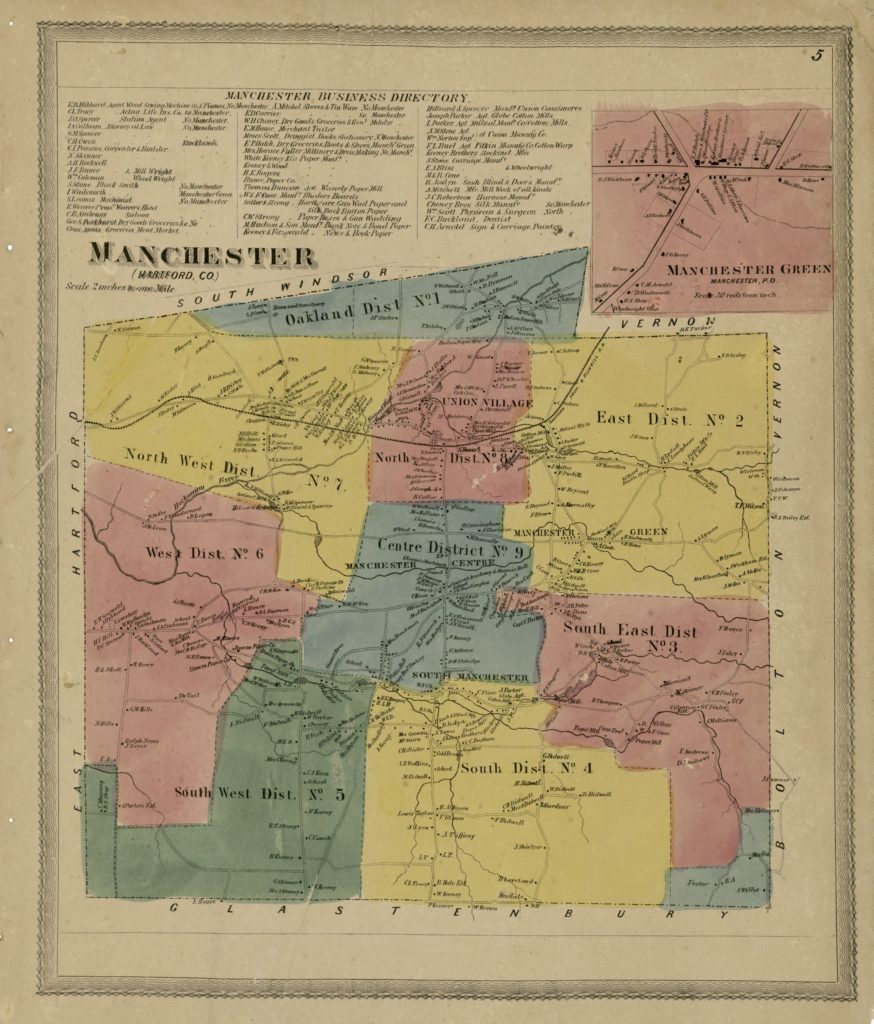 Where is my town?
Where is my town?
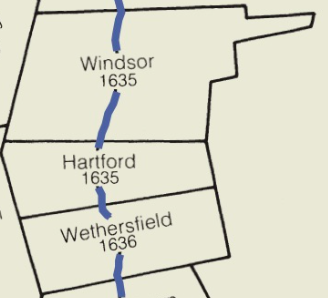
Manchester split off from Hartford, one of the three “River Towns.”
Manchester is in the middle of Connecticut. It is a few miles east of Hartford. The Hockanum River runs through Manchester. The river was a valuable resource for farming and industry.
Manchester has parks, lakes, and hiking trails for recreation. Case Mountain is a popular spot for hikers and mountain bikers. From the top of the mountain there is a clear view of the City of Hartford.
How was it founded?
The Podunk tribe lived in the area known today as Manchester. They lived along the Hockanum River and its tributaries. In 1672 settlers from Hartford bought the land from the leader of the Podunk Tribe. The area was known as the Five Mile Tract. The Hartford settlers did not build settlements right away. They used the land for farmland and pasture. The Podunk continued to live in the area.
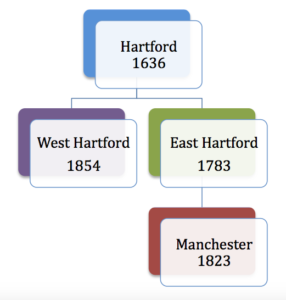
Hartford, the towns that split off from Hartford, and the years they were established.
In 1731 settlers began moving into the Five Mile Tract. It became known as Orford Parish. The population grew to 1,000 in 1753. In 1783 the part of Hartford on the east side of the Connecticut River split off and became East Hartford. In 1823 Orford Parish separated from East Hartford and became Manchester.
How do its residents make a living?
Farmers grew a variety of crops. Indian corn, rye, oats, barley, and buckwheat were common crops. After 1800, the town began to industrialize. Mills were built along the Hockanum and Podunk rivers. Manchester became a major producer of glass, paper, and silk. Pitkin Glass Works was founded in 1783.
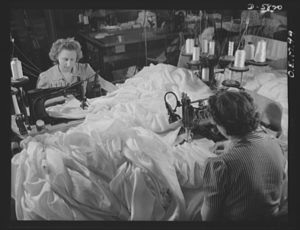
Women sewing parachutes for the Pioneer Parachute Company, Manchester, 1941. Library of Congress
In 1838, the Cheney Brothers Silk Manufacturing Company was founded. At first it made silk thread. After the Civil War, it made cloth for clothing and furniture. Its silks were known around the world. Cheney Brothers was a major provider of jobs for over 100 years. In the 1920s, the company employed more than 4,500 workers. Cheney Brothers declined during the Great Depression. An offshoot, the Pioneer Parachute Company, opened in World War II to make parachutes for the military.
How did it grow?
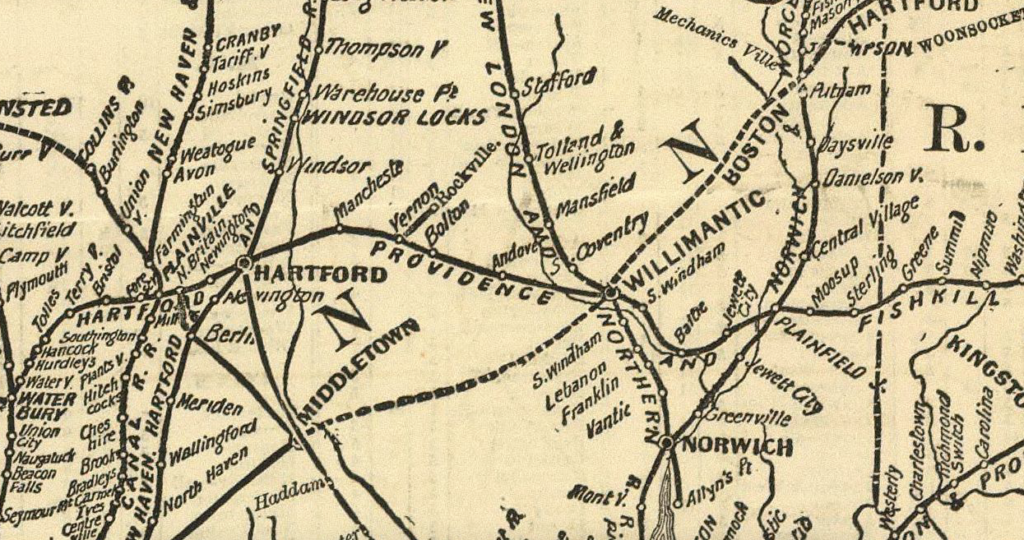
The railroad from Hartford to Willimantic passed through Manchester, 1871.
In 1820, there were fewer than 1,500 people living in Manchester. By 1900, the population had climbed to over 9,000. People moved there to work in the mills. In 1850, the first railroad track was laid through town. The railroad carried workers and goods west to Hartford and east to Willimantic and beyond.
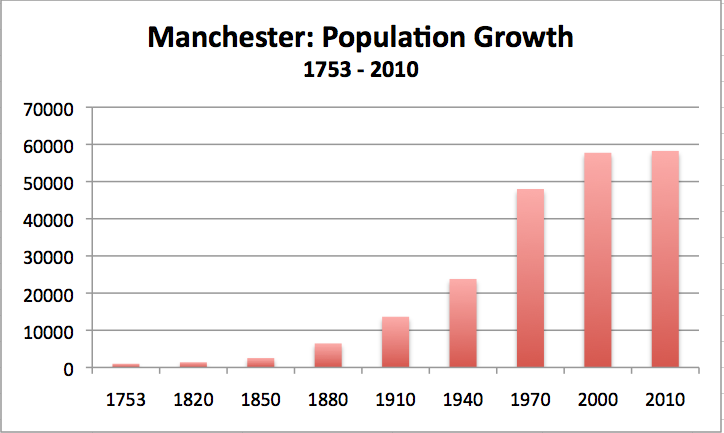
Who are its notable people?
Timothy Cheney
Timothy Cheney was a farmer and famed American clockmaker. He built the Cheney Homestead in 1785 along a small brook. He operated a small gristmill. His grandsons founded the Cheney Brothers Silk mills.
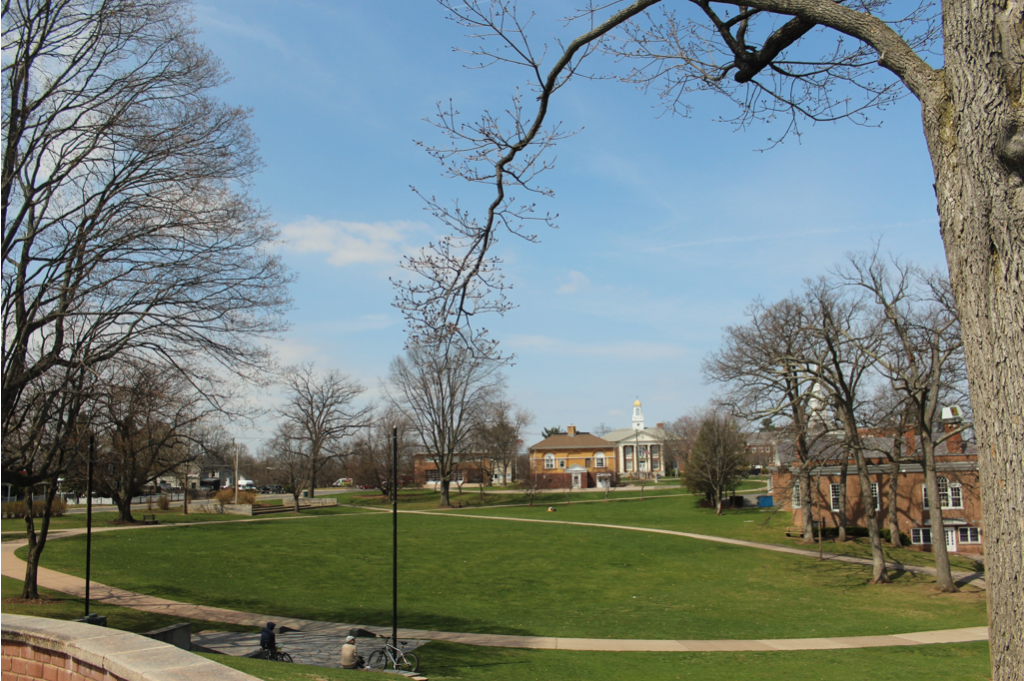 Manchester Road Race
Manchester Road Race
One of Manchester’s claims to fame is not a person, it’s a race. In 1927, the Manchester High School cross-country team organized the first Manchester Road Race. It was cancelled during the Great Depression and started up again in 1945. Only 12 people ran in the first race. It is now a favorite race of runners. Today, more than 15,000 people compete in the race every year. Runners come from all over the world to compete.
This is based on Sarajane Cedrone, “Manchester, Connecticut: The City of Village Charm,” unpublished manuscript for History 501, CCSU, Fall 2016.


 Where is my town?
Where is my town?




 Manchester Road Race
Manchester Road Race